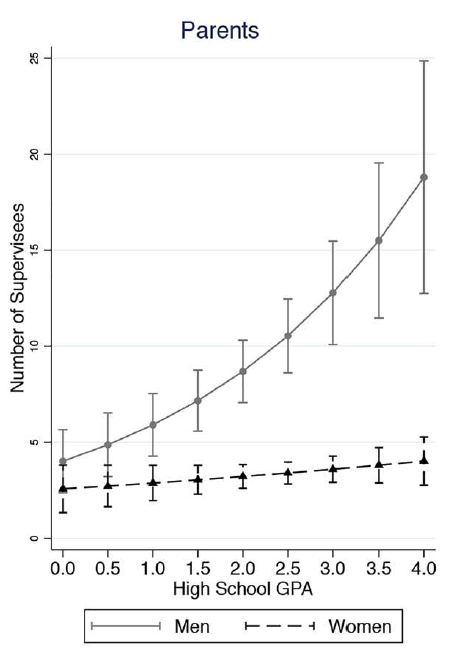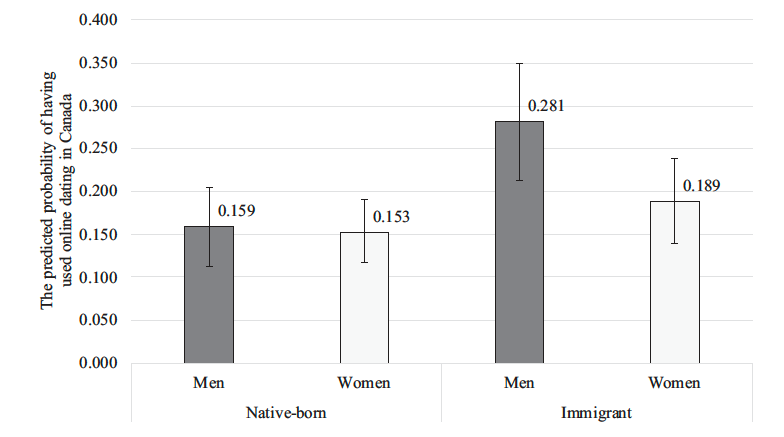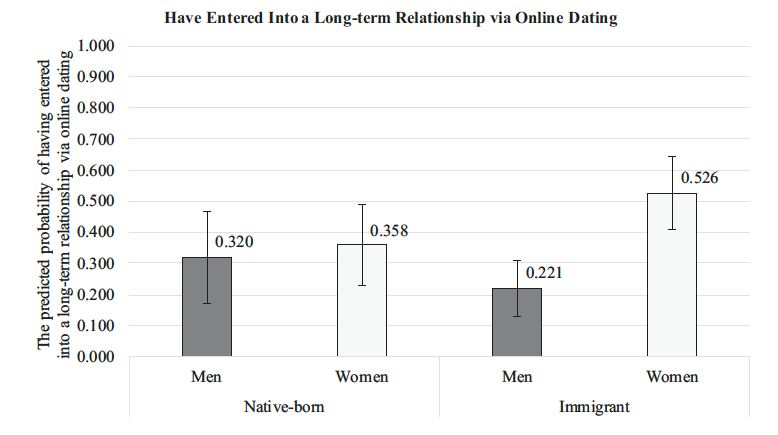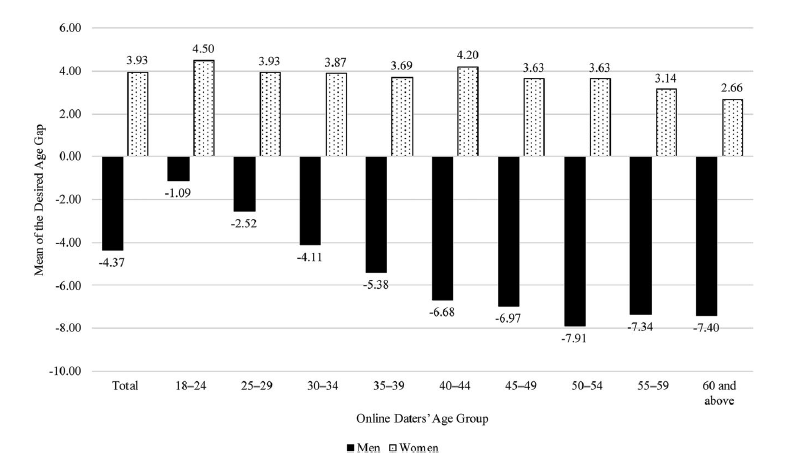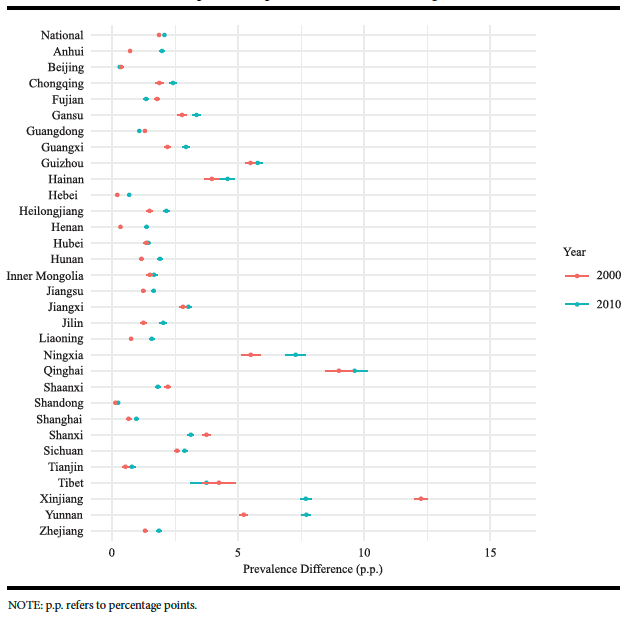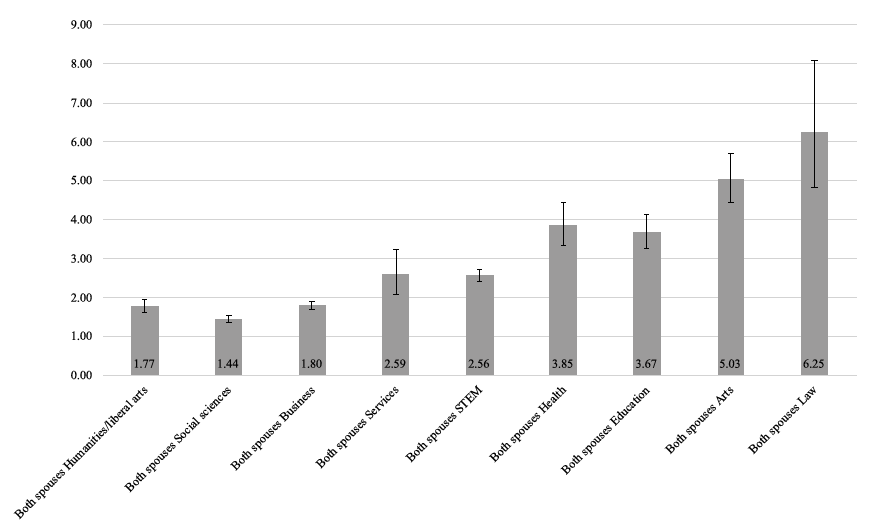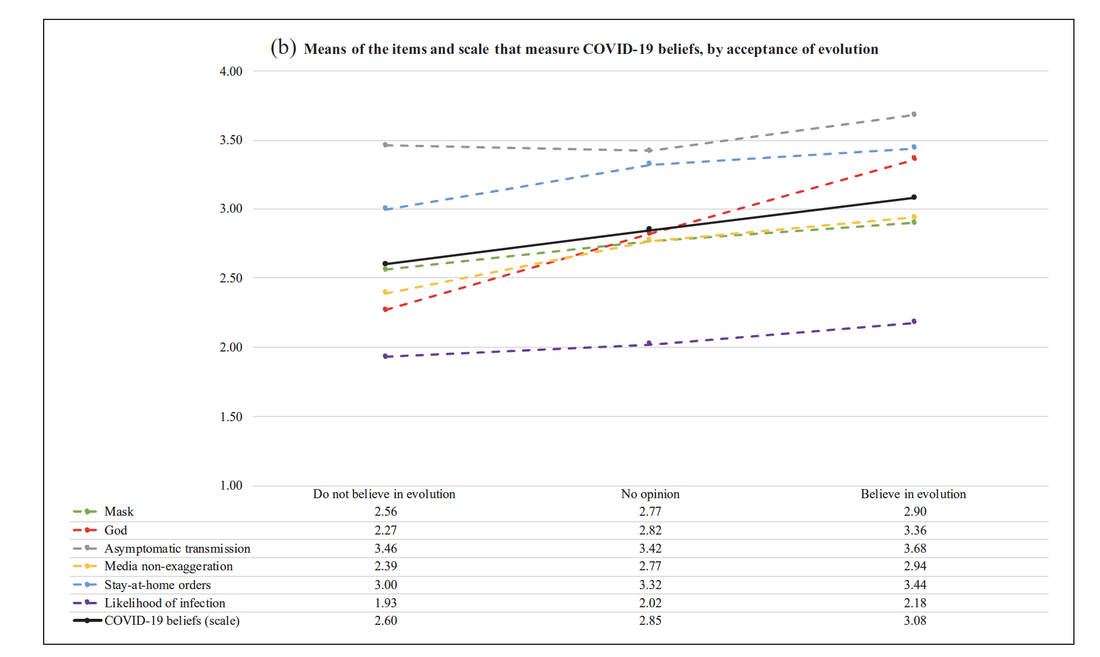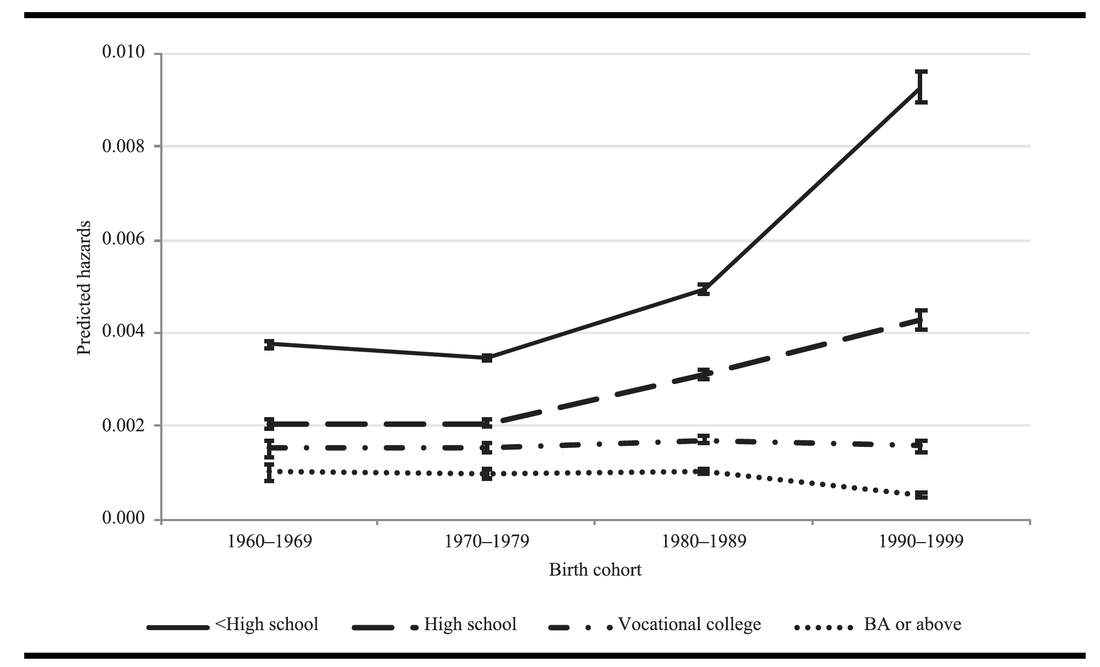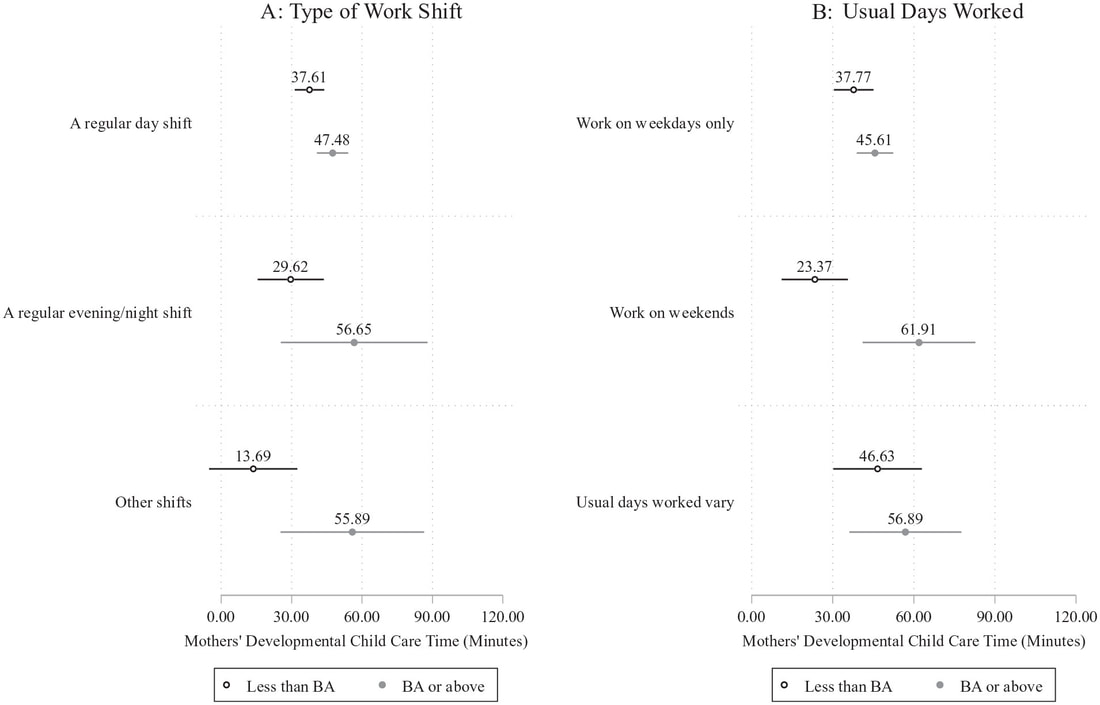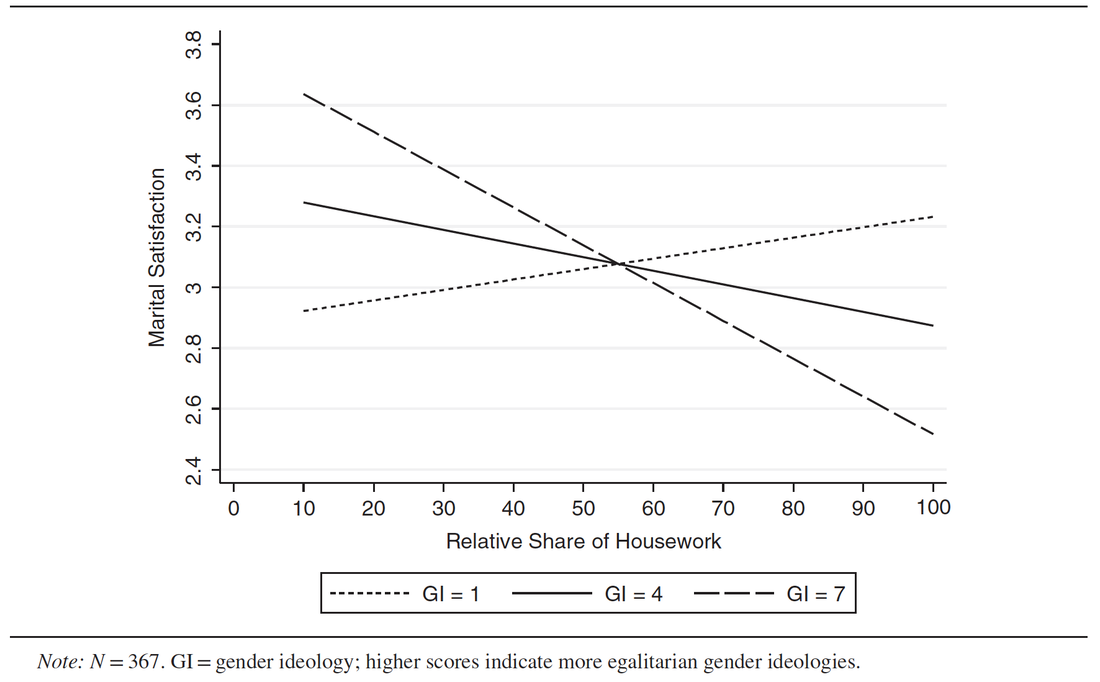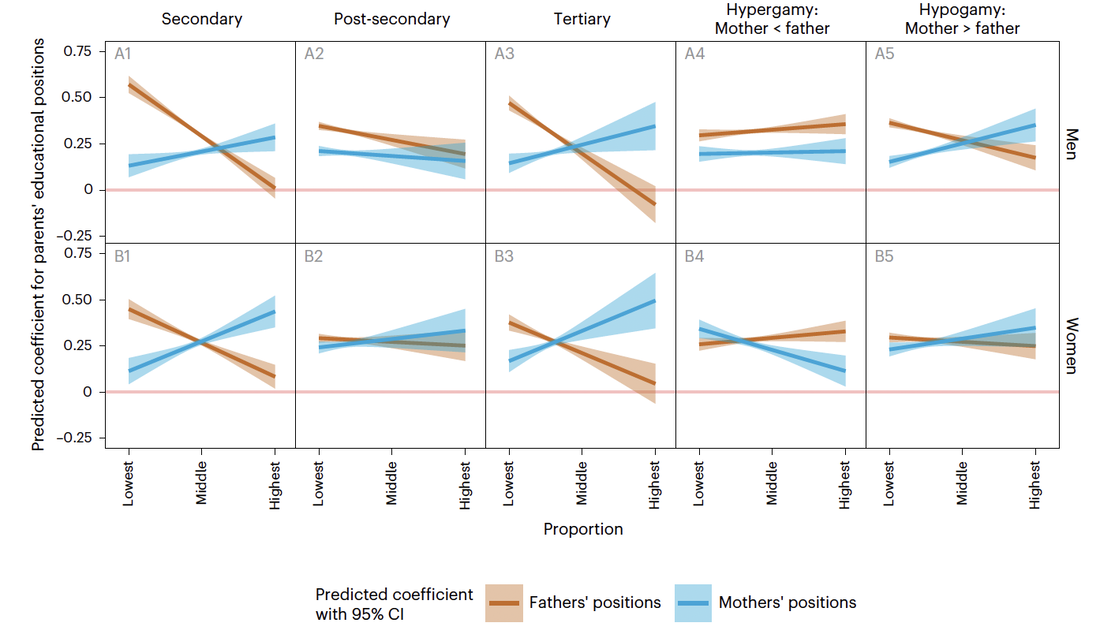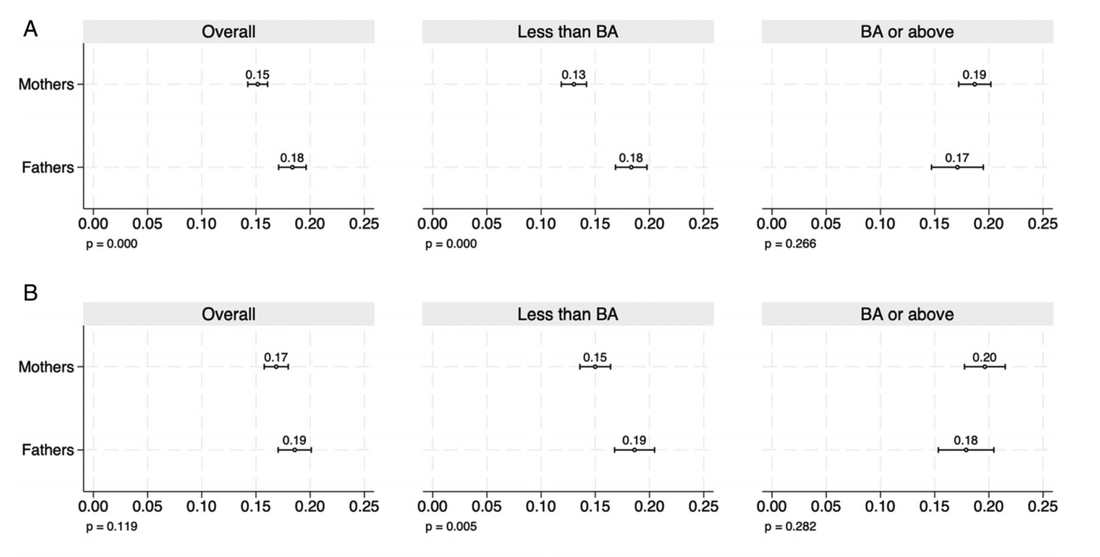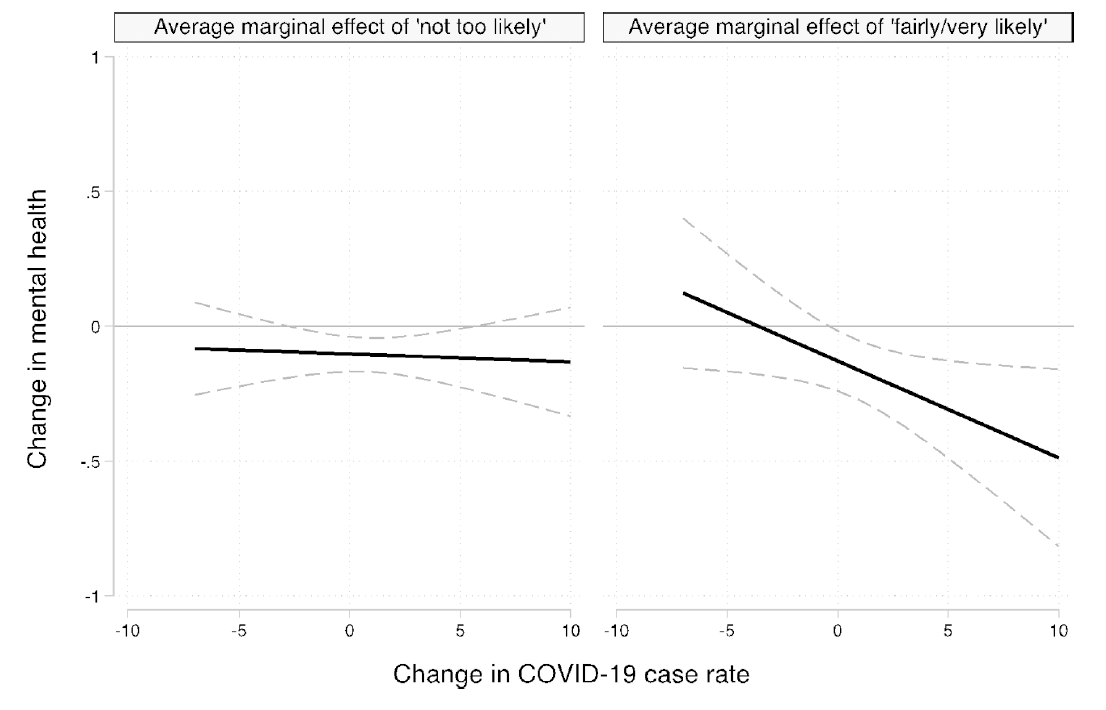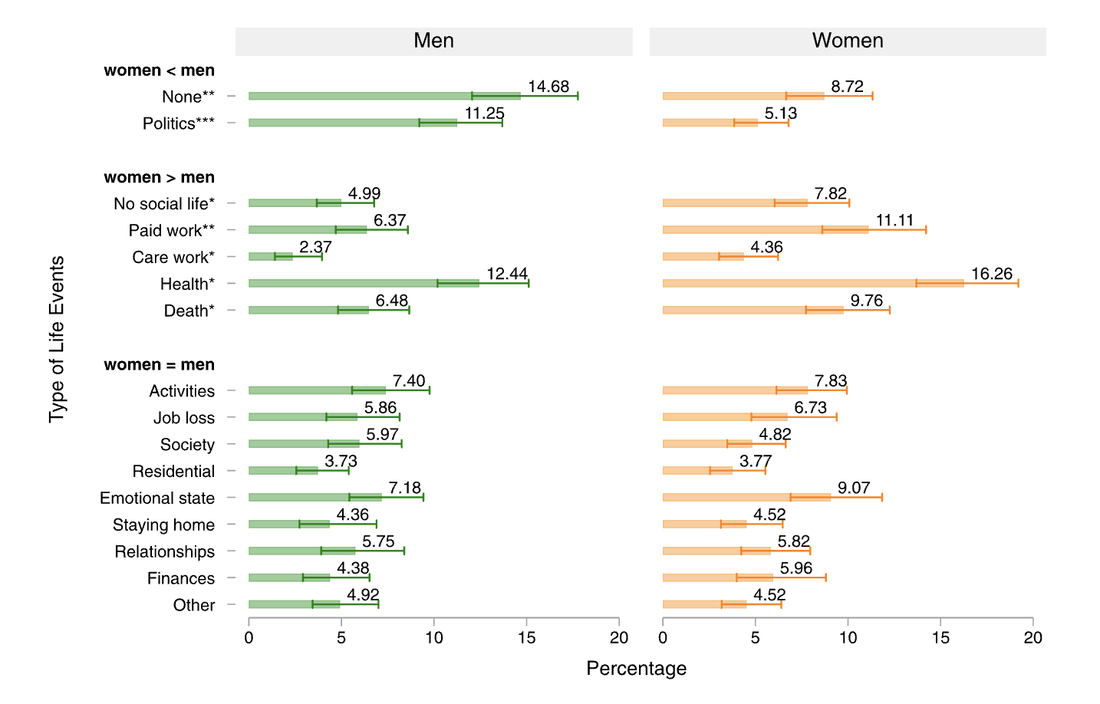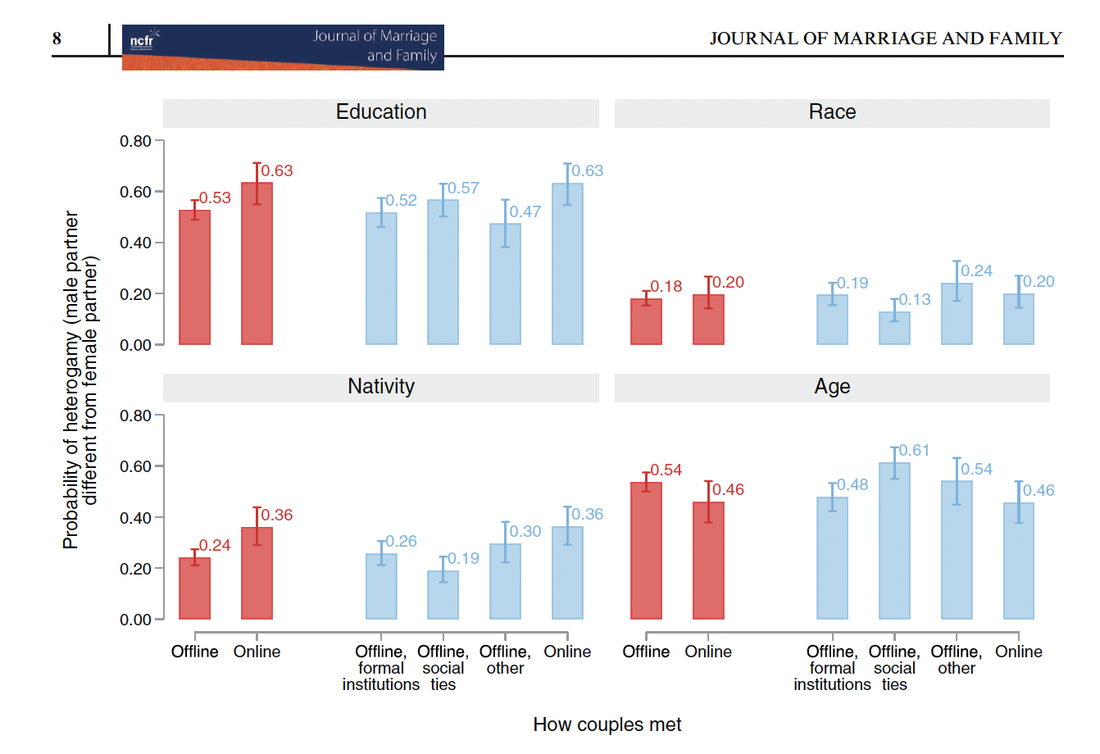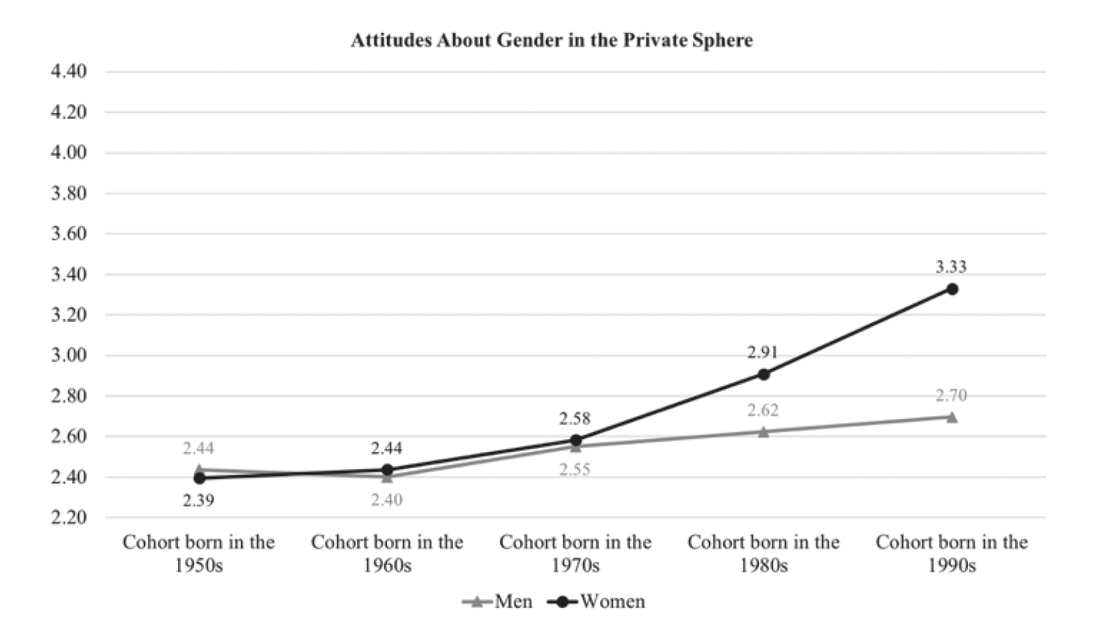Social science research helps us better understand people and societies. This page showcases fascinating findings of Dr. Yue Qian's research through graphs. Clicking on the graph takes you to the associated publication.
The gender leadership gaps by GPA are stark among parents who were top achievers in high school. Among those who earned a 4.0 GPA, fathers manage over four times the number of supervisees as mothers do (Figure 1). This research highlights the vast under-utilization of women’s talent for organizational leadership.
When talking about settlement and integration, we often focus on helping immigrants get a job, but what about their needs for love and companionship? My research shows that immigrant men appear most proactive in adopting online dating (Figure 2a), but they are the least likely to find a long-term partner via online dating (Figure 2b).
According to a study that analyzes online dating profiles, age preferences are highly gendered. With increases in age, men increasingly prefer partners who are much younger than themselves, whereas women do not show much variation in preferred age gaps between them and their partners (Figure 3).
Child marriage, defined as marriage before 18 years of age, is an indicator of gender inequality. In Mainland China, child marriage is more prevalent among women than among men, and the gender gap is widening over time. According to a study that analyzes census data, the gender gap in the prevalence of child marriage in 2010 was greater than that in 2000 in at least 22 of the 31 provinces (Figure 4).
According to a study that analyzes American Community Survey, college major influences whom you marry. College graduates majoring in law, arts, health, and education are more likely to marry someone with the same major, whereas those in social sciences, humanities/liberal arts, and business are less likely to marry within their own major (Figure 5).
According to a study that analyzes nationally representative US data, acceptance of evolution is associated with treating COVID-19 more seriously (Figure 6). Thus, how individuals think about science shapes their understanding of COVID-19.
According to a study that analyzes a nationally representative sample of 221,990 Chinese women born between 1960 and 1999, those born in the 1980s and 1990s are more likely than those born in the 1960s and 1970s to experience a pregnancy prior to first marriage (Figure 7). This cohort trend is driven by increases in premarital pregnancy among women with a high school education or less. The less educated women and their college counterparts increasingly diverge in the likelihood of experiencing a premarital pregnancy.
According to a study that analyzes the American Time Use Survey 2017–2018 Leave and Job Flexibilities Module, unstable and irregular scheduling arrangements, such as nonstandard shifts and weekend jobs, widen the educational gap in mothers' developmental child care time (Figure 8).
How does the gender division of housework shape Taiwanese women's marital satisfaction? It depends on these women's gender ideology. As shown in a study published in the Journal of Marriage and Family, for the least egalitarian Taiwanese women, relative share of housework was positively associated with marital satisfaction, whereas for the most egalitarian women, their relative share of housework was negatively associated with marital satisfaction (Figure 9).
What implications of education expansion and changes in the educational pairing patterns of parents are there for intergenerational educational mobility?
Bringing mothers into the picture, a study published in Nature Human Behaviour challenges the idea that increased access to education around the world has allowed more children to achieve educational success irrespective of their parents’ education. With education expansion, father–child associations in educational status have weakened, whereas mother–child associations have strengthened (Figure 10).
In addition, as the proportion of mothers paired with a less-educated father (hypogamy) in society and cohort increases, mother–child associations in educational status strengthen and father–child associations weaken. Conversely, as the proportion of mothers paired with a more-educated father (hypergamy) increases, mother–daughter associations in educational status weaken (Figure 10). The findings on the changing educational pairing patterns of parents underline the importance of considering the gendered context in which education expansion occurs.
Bringing mothers into the picture, a study published in Nature Human Behaviour challenges the idea that increased access to education around the world has allowed more children to achieve educational success irrespective of their parents’ education. With education expansion, father–child associations in educational status have weakened, whereas mother–child associations have strengthened (Figure 10).
In addition, as the proportion of mothers paired with a less-educated father (hypogamy) in society and cohort increases, mother–child associations in educational status strengthen and father–child associations weaken. Conversely, as the proportion of mothers paired with a more-educated father (hypergamy) increases, mother–daughter associations in educational status weaken (Figure 10). The findings on the changing educational pairing patterns of parents underline the importance of considering the gendered context in which education expansion occurs.
The pandemic recession has been dubbed a “shecession.” My research reveals intersectional inequalities in the consequences of job loss during the pandemic as experienced by mothers and fathers of different educational levels. After job loss during the pandemic, fathers of young children had an advantage in finding re-employment over mothers of young children, with this pattern concentrated in parents without a bachelor’s degree. The gender re-employment gap among less-educated parents persisted even after we accounted for a wide set of controls (Figure 11).
The widespread economic downturn during the COVID-19 pandemic led to challenges for still-employed workers as well, creating concerns and uncertainties about their jobs. My research shows that living in states with increased COVID-19 case rates exacerbates the adverse effects of perceived job insecurity on mental health (Figure 12).
My research drew on individuals' own words to identify both conventional and novel sources of stress during COVID-19. Men were more likely to report having experienced no stressful life events or else mention politics as a source of stress. Women, by comparison, were more likely to report the following as stressful—inability to socialize, paid work, care work, health, or the death of loved ones (Figure 13). Importantly, gendered exposure to stressful life events contributed to women's greater depressive symptoms compared to men's.
My research examines, for the first time in Canada, the relationship between how different-sex couples meet and assortative mating on education, race, nativity, and age. The red bars in Figure 14 indicate that educational heterogamy and nativity heterogamy are higher, but age heterogamy appears lower, in online than offline dating. As for the blue bars, specific channels of offline dating— formal institutions, social ties, and other channels— are distinguished and compared with online dating. Online dating tends to entail higher educational and nativity heterogamy (vs. meeting through formal institutions), higher racial and nativity heterogamy but lower age heterogamy (vs. meeting through social ties), and higher educational heterogamy (vs. meeting through other offline channels).
My research analyzes Chinese individuals' responses to the question: “Men should put career first, whereas women should put family first.” Responses range from 1 (completely agree) to 5 (completely disagree), with higher scores indicating more egalitarian gender ideology. Figure 15 shows that women hold more egalitarian gender attitudes than men and the gap in gender attitudes between women and men has widened among younger cohorts.
